Art Fairs
4 Striking Trends at NADA Miami That Show Us Where the Art World—and Market—Are Headed Next
The fair this year included a healthy number of works priced at $10,000 and less.
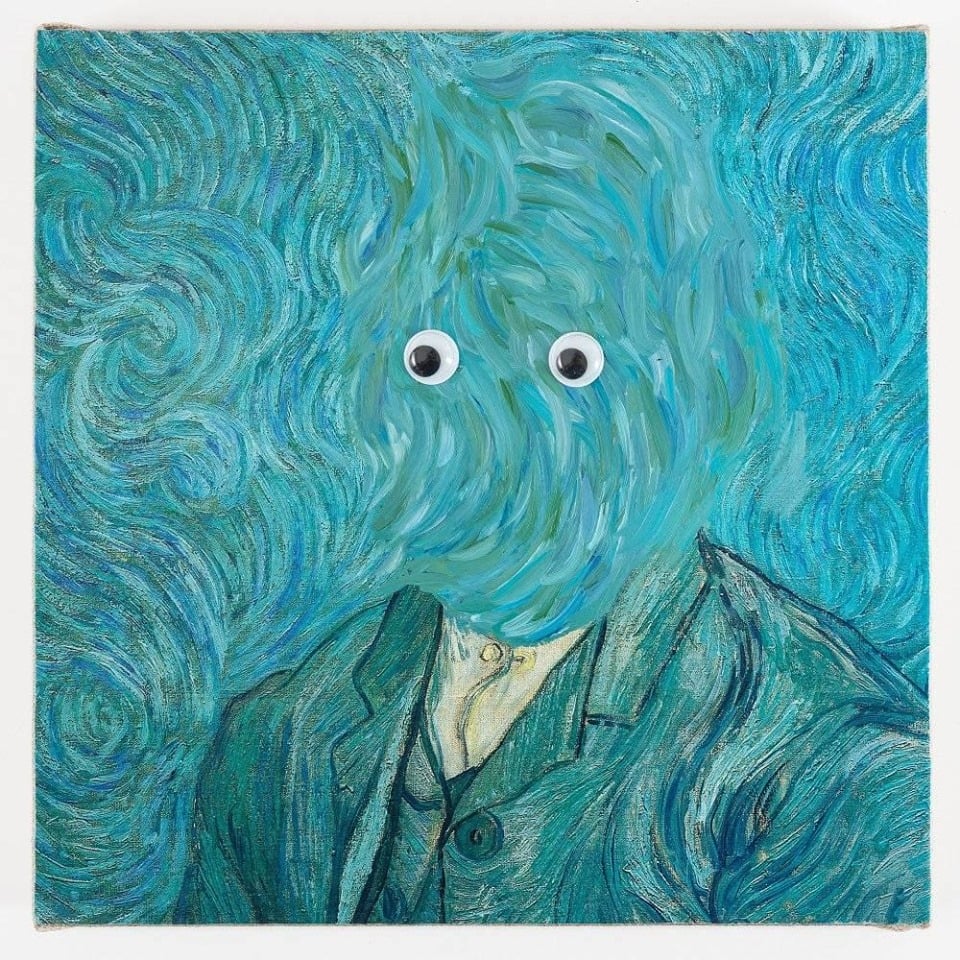
The fair this year included a healthy number of works priced at $10,000 and less.

Julia Halperin &
Tim Schneider

A few hours into the VIP preview of NADA in Miami on Thursday, Emanuel Aguilar of Chicago’s Patron Gallery was almost out of breath. “I haven’t had a morning like this since 2011,” he said. “I haven’t been able to finish conversations.” The 17th edition of the fair, which offers work by emerging artists from 135 exhibitors from around the world, opened to a crush of visitors and brisk sales. By 3 p.m., around 80 percent of the art on Patron’s stand had sold, according to the gallery.
While small and midsize art businesses have struggled to stay afloat in recent years, many of NADA’s dealers have benefitted from the fact that collectors seem to be on a tighter budget these days. “People don’t want to spend half a million dollars right now—they want to spend $20,000,” said Lexi Bishop of the West Hollywood-based Nino Mier Gallery.
NADA also continues to be a fair where collectors can discover artists who may go on to show at larger venues in years to come. In other words, if it’s trend-spotting you want, NADA is the place to be. To that end, we pulled together a selection of themes that emerged from the aisles this year, which may offer some insight into where the market at large is headed.
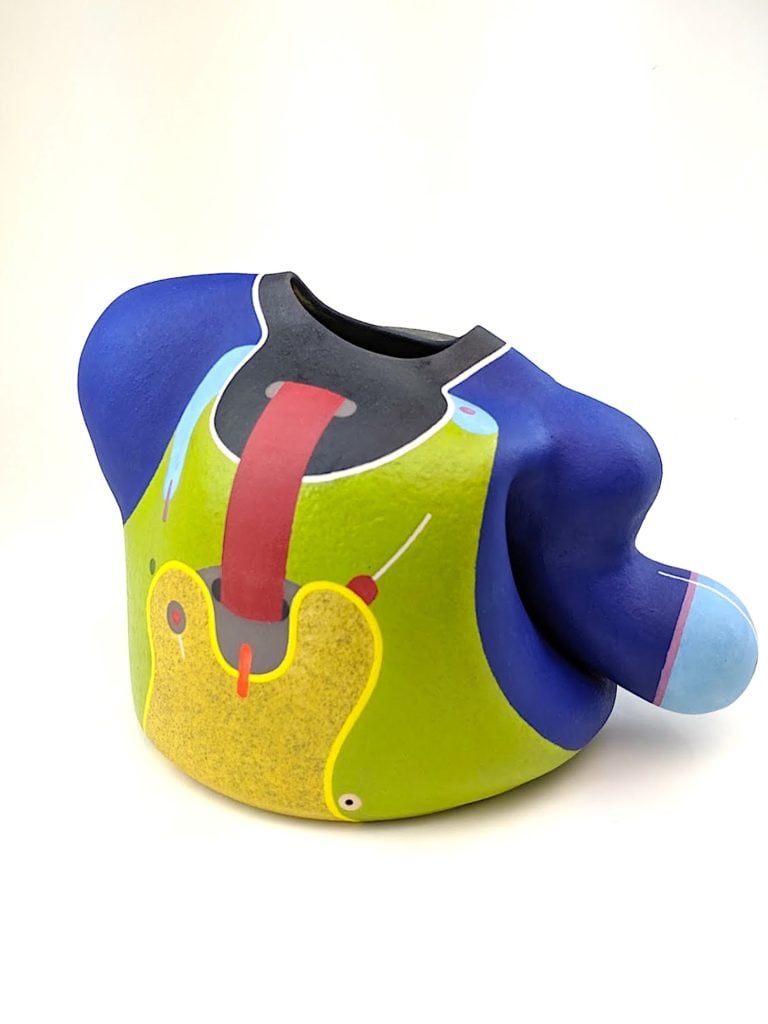
A ceramic work by Jose Sierra. Photo courtesy of Louis Lefebvre.
Certain genres were MIA at NADA: there was almost no photography, for example, and very little new-media art. But you could barely turn a corner without bumping into a ceramic sculpture. The medium has attracted artists of all ages—and collectors, too. Within the first few hours of the fair, Galerie Lefebvre & Fils from Paris sold out of its solo display of amoebic ceramic vases by the Venezuelan artist Jose Sierra, priced from $2,500 to $6,500. (The series is inspired by a Gabriel García Márquez text about bananas, which appear to be the fruit of the week.)
Ceramics are appealing to collectors in part because “there aren’t so many artists with a really high price point,” says Louis Lefebvre.
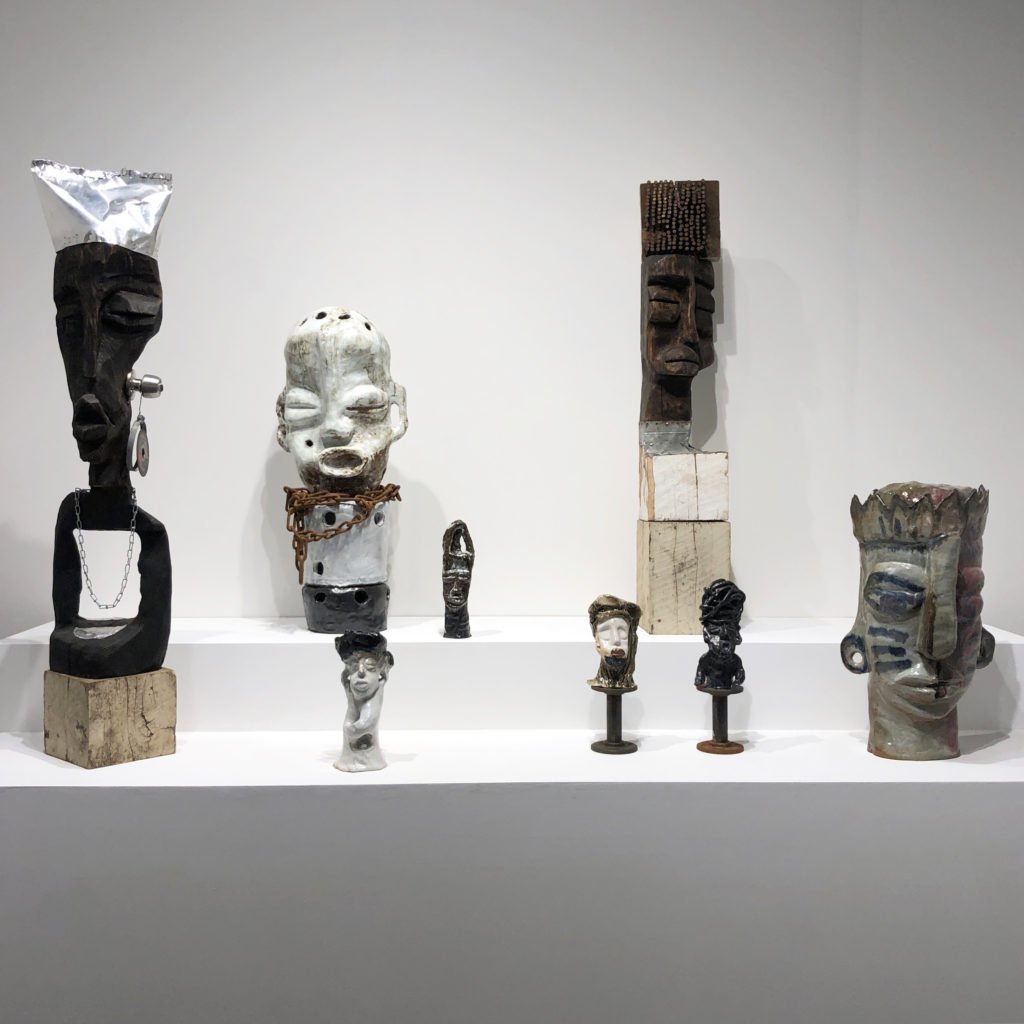
Gordon Robichaux’s solo presentation of Leilah Babirye’s work. Photo courtesy of the gallery.
While Sierra is a dedicated ceramicist, other artists are new to the genre. At 64, Dutch artist Marliz Frencken has only recently embraced the form, having dedicated much of her career to painting. Her ceramics, on view at Althuis Hofland Fine Arts from Amsterdam, are interpretations of the female form—from tall and sinewy, to stout and squat. At least one of the sculptures, priced between €2,400 and €2,800, sold during the VIP preview.
The New York gallery Gordon Robichaux also swiftly sold out its solo booth dedicated to the Ugandan artist Leilah Babirye, including her ceramic, wood, and found-object sculptures (priced from $3,400 to $10,000). Babirye successfully sought asylum in the United States several years ago after being outed as a lesbian in her home country, which put her and her family in danger. Her ceramic sculptures of guardian figures “are trans and queer subjects that represent chosen family in the LGBTQ community,” said gallery co-owner Jacob Robichaux.
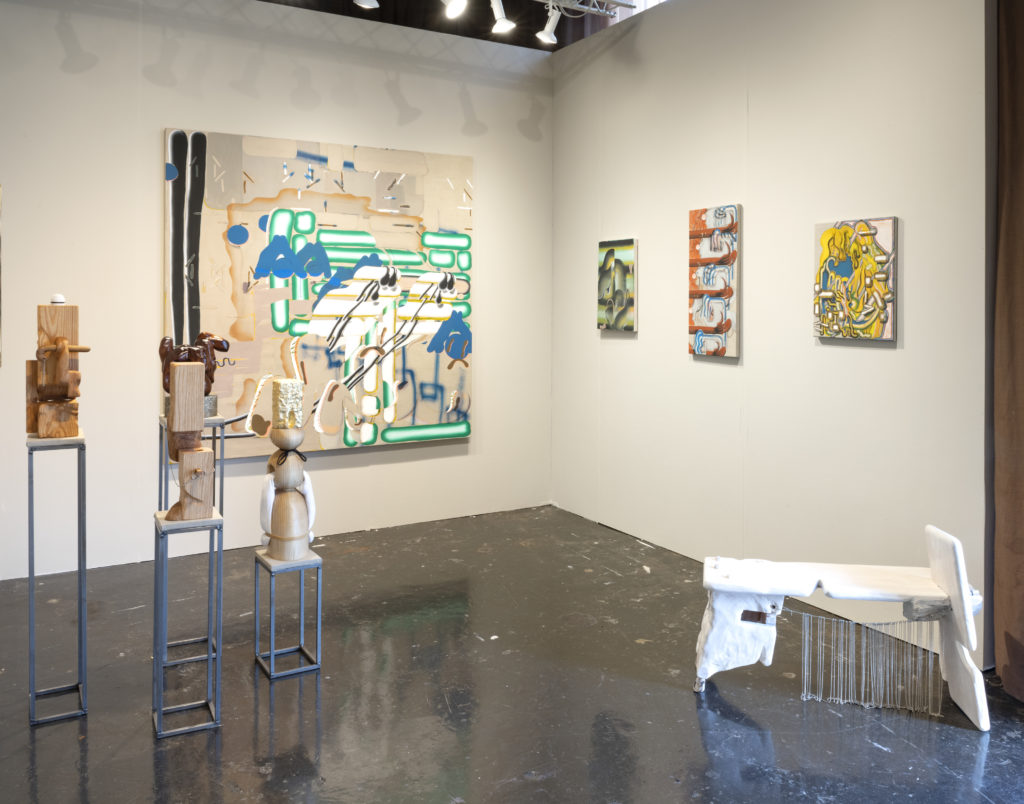
Bridget Mullen andDouglas Rieger’s two-person booth at Helena Anrather at NADA 2019. Photo courtesy of Helena Anrather.
Figurative painting by young artists has dominated the market for several years now. But its death grip may be weakening. While it felt as if almost every booth at NADA last year was stacked with paintings of people or colorful interiors, this year offered a bit more variation. “It’s become so trendy,” Bishop, of Nino Mier Gallery, said. “Even if you had some painting of a poodle, you could find someone to buy it.” But, like any trend, “people eventually start turning away from it. And there is something timeless about abstraction.”
She sold two works by Ethan Cook, whose large compositions are made from hand-woven canvas and painted aluminum, for $32,000 and $28,500. Other prominent abstract works at the fair include layered canvases by Vivian Suter, whose saturated works sold for prices ranging from $25,000 to $35,000 at the Guatemala City-based Proyectos Ultravioleta’s booth.
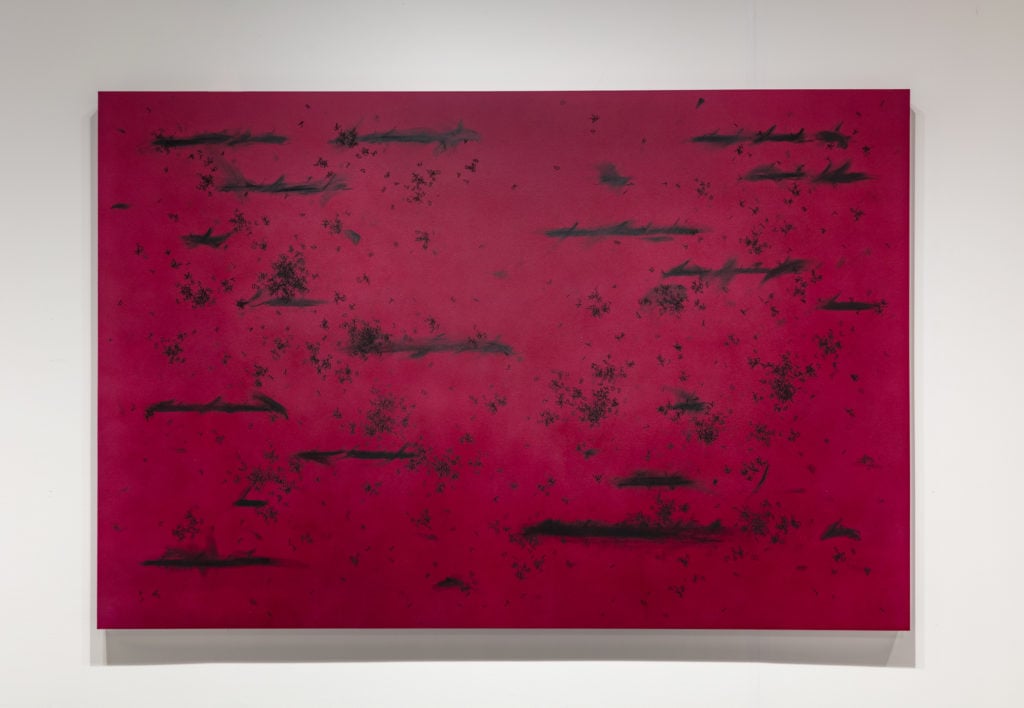
Bethany Collins, Stand beside her (God Bless America) (2019). Photo courtesy of Patron Gallery.
But many works on view still retained some link to the real world, resisting full-on abstraction. Helena Anrather Gallery from New York sold around half its booth by sculptor Douglas Rieger and painter Bridget Mullen, whose wry canvases appear entirely abstract until you notice an eye drooping over a cylindrical shape, or a hand extending across the surface, for prices ranging from $4,000 to $14,000. “That space between figuration and abstraction feels fresh—it’s like a game to look at the painting and see how it changes,” Anrather said.
Patron Gallery, meanwhile, sold a composition by Bethany Collins that presents piles of letters taken from American hymns for $35,000. “We are reconsidering the boundaries between figuration and abstraction,” said Logan Lockner, the editor of the Atlanta-based publication Burnaway, which is presenting work by five painters from Georgia at the fair.
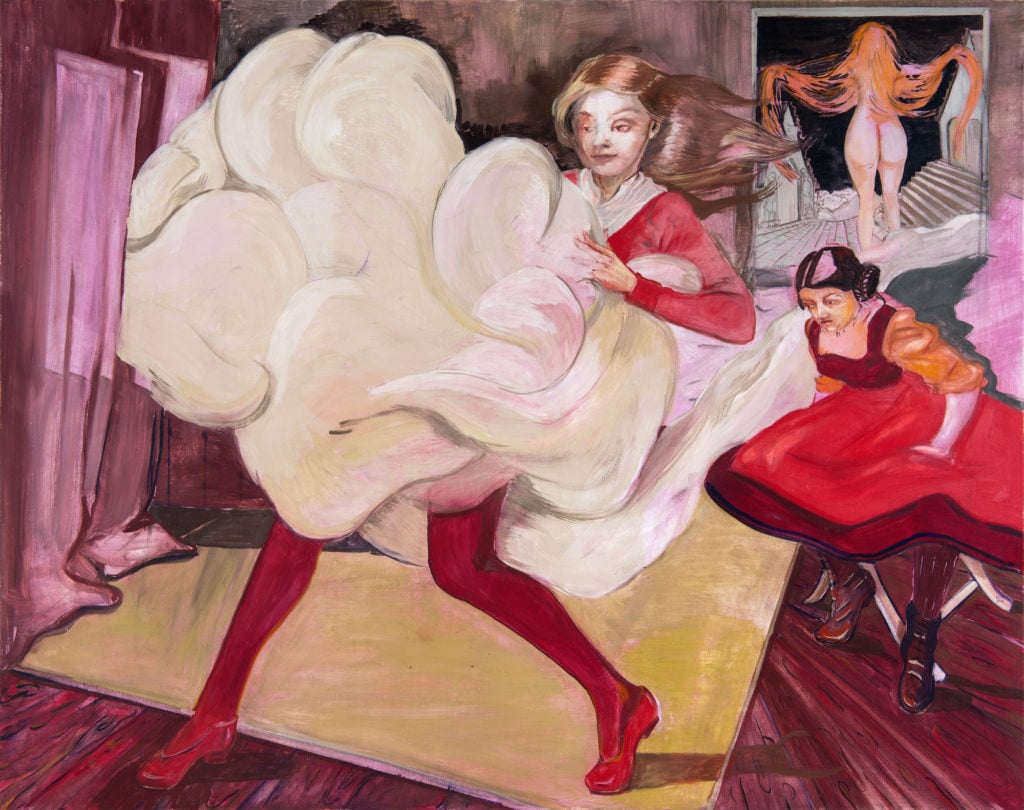
Rosa Loy, Welle (2011). Courtesy Lyles & King, New York.
If you’re looking for something that lands in the sweet spot between an authentic Dalí and your college roommate’s poster of Swans Reflecting Elephants, NADA has you covered—or it did, if you acted fast. Several dealers featured artists putting a contemporary spin on classic Surrealist themes, with robust results for all involved.
Brooklyn gallery Fisher Parrish presented a solo stand by ascendant 26-year-old talent Alexander Harrison, whose trippy trompe l’oeil paintings of sometimes racially charged iconography, such as a colossal watermelon with an open wound on its side, sold out at prices ranging from $1,600 to $9,500 each. (Harrison, who was born in Greenville, South Carolina, is African American.) Cofounder Zoe Fisher confirmed that buyers also made a clean sweep of Harrison’s concurrent exhibition at the gallery’s permanent space, with over a week still to go in its run.
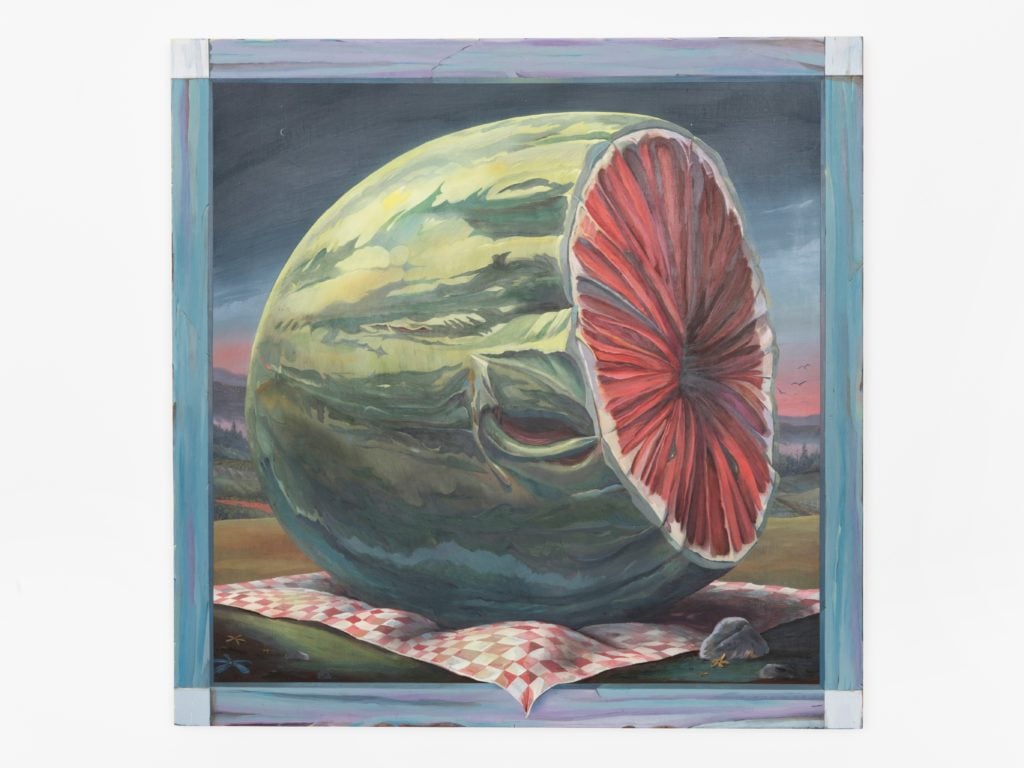
Alexander Harrison, The Beast (2019). Courtesy of Fisher Parrish, New York.
Lyles & King gallery from New York also sold two canvases at $37,000 each by Rosa Loy. Her uncanny paintings exclusively depict female characters in Surrealist-inspired scenarios. Loy, who has been painting for over 40 years (and who emerged from the so-called New Leipzig School alongside her husband, Neo Rauch), was the subject of a solo exhibition at Kohn Gallery in 2018. She will debut a one-person exhibition at Lyles & King this fall.
Nearby, Rachel Uffner from New York sold a trio of works by Anya Kielar, who houses three-dimensional objects inside theater-window-like boxes, then stretches handpainted textiles over the forms. Think of them as playful, craft-informed mashups of Rene Magritte and Joseph Cornell. They sold for $15,000 apiece by mid-afternoon Thursday. So while Kielar may not be making exquisite corpse drawings with Loy and Harrison, their joint success suggests that an updated Surrealist aesthetic is very much alive in our increasingly surreal era of fake news, internet hoaxes, and nearly magical technology.
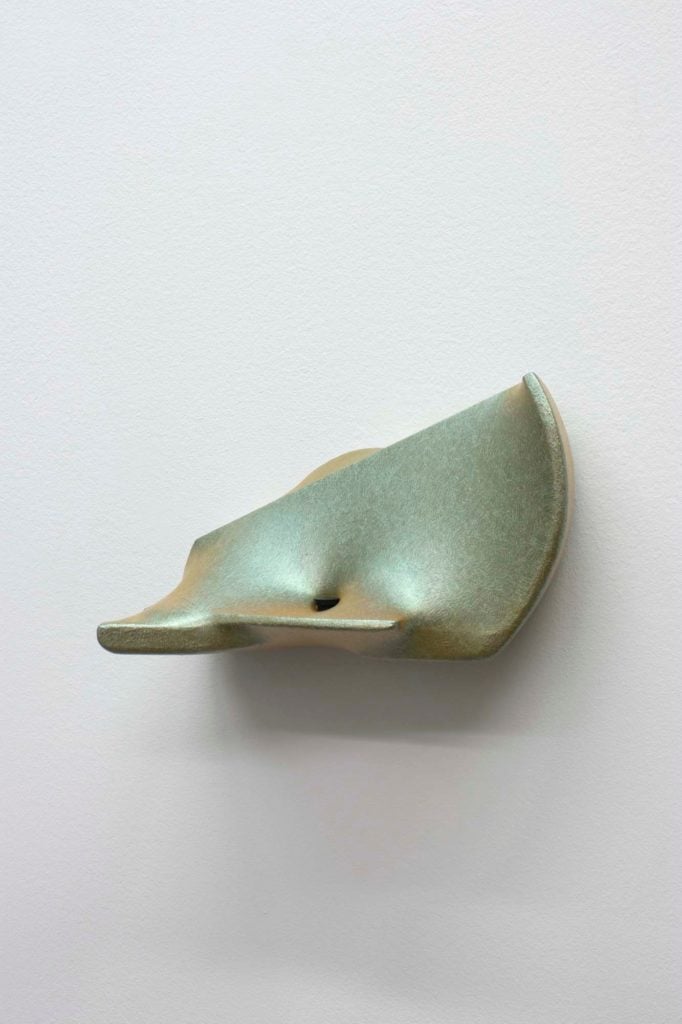
Zach Meisner, Untitled (2019). Courtesy of Mickey Gallery, Chicago.
Regardless of the various styles and themes on trend at NADA Miami this year, in one way or another, most dealers surveyed at the fair on opening day nodded toward a market activated in part by newly realistic expectations. The fair featured an ample supply of intriguing works available south of $10,000, a marked difference from some recent years, even for an event defined by its focus on rising talent.
Chicago gallery Mickey dedicated much of its booth to a series of perceptually and materially bewitching sculptures by Texas-based artist Zach Meisner, a former studio assistant to Larry Bell who has devised a way to stretch an ultra-thin “skin” of acrylic paint and medium over armatures of poplar, MDF, and other materials. Priced from $1,000 to $6,000 each, the works had not yet sold out by mid-afternoon Thursday, but founder Mickey Pomfrey said he was “happy with the progress” they’d made with buyers, perhaps in part due to a refreshingly direct attitude toward valuation.
“Some people will add 20 percent for a fair,” Pomfrey shrugged. “I just try to price at what the actual demand is in the gallery.”
Brussels-based gallery Super Dakota made some of the bigger scores on preview day by selling three Julia Wachtel canvases before noon, including one for $60,000. But founder Damîen Bertelle-Rogier also emphasized that it was important for the gallery to balance Wachtel’s works with accessibly priced “discoveries,” such as Jeanne Briand’s wall-mounted aluminum masks and multidisciplinary artist Chris Dorland’s single-channel video work, each for $3,000.
In fact, the prevailing attitude may have been captured best by Matt Ducklo, who returned to his native Memphis, Tennessee, after a decade in New York to open his basement gallery, Tops, in 2012. “A lot of people are leaving New York and looking for something more sustainable,” he said. “I’m from a place where $2,000 is still a lot of money.”
That number didn’t come up by coincidence. For the gallery’s NADA debut, Ducklo exhibited a solo booth of domestically sized paintings by Kevin Ford, each one made with a combination of spray-gun-applied paint and traditional brushwork, priced from $2,000 to $6,000. Four were sold by mid-afternoon Thursday, with buyers still circling others.
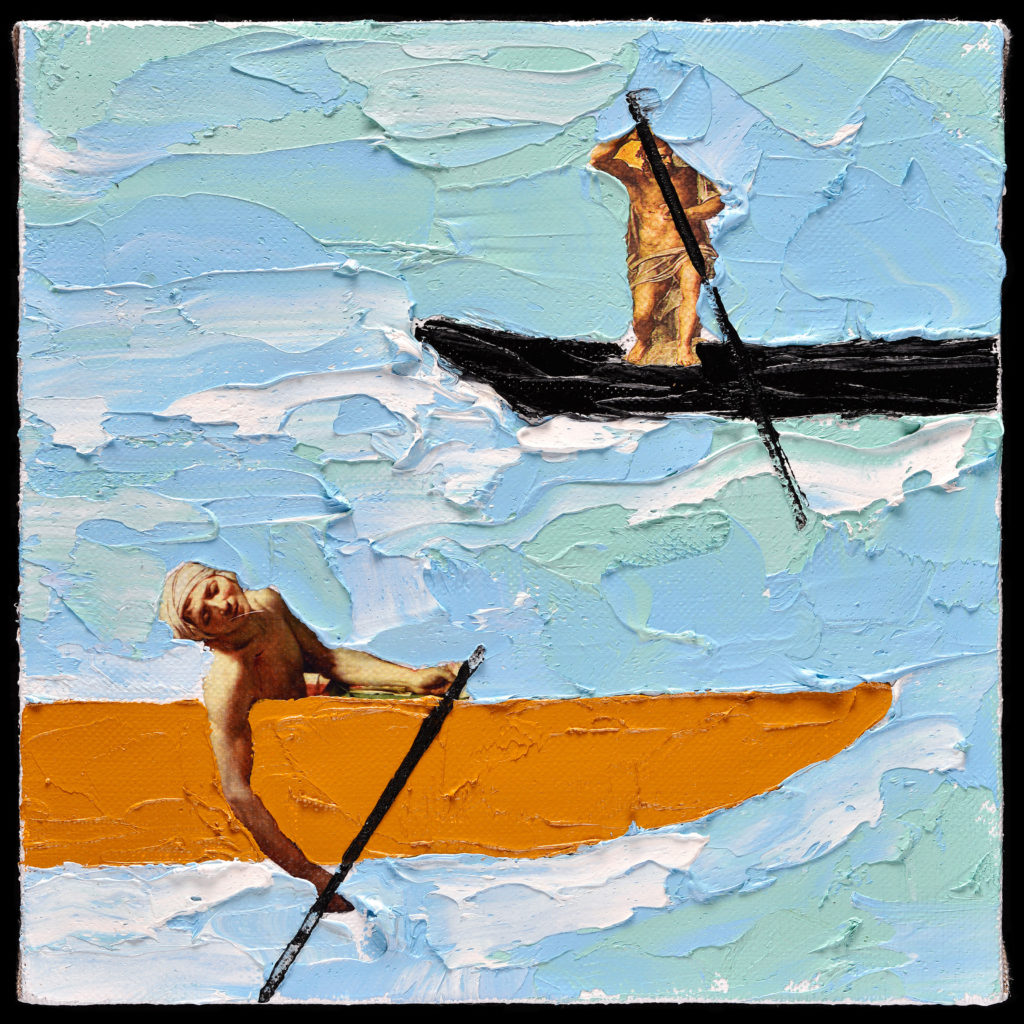
Przemek Matecki, Small Painting (2016–19). Image courtesy of Raster Gallery, Warsaw.
In light of all that, Warsaw-based gallery Raster arguably pinpointed the zeitgeist in its booth. Along with higher-priced works by the likes of renowned collective Slavs and Tatars (a mirror work by the group was on sale for $16,500 plus VAT), the gallery hung its outside wall with about two dozen small collage paintings by Przemek Matecki. Each one (the gallery brought about 50 of them in total) cleverly sends up a work by a canonical male great on a compact canvas measuring no larger than 7.8 by 7.8 inches. All were identically priced at $1,000 (plus VAT) and 10 sold on the first day.
After praising Matecki’s wit and technique, cofounder Łukasz Gorczyca addressed the works’ combination of size, weight, and draw by saying, “This kind of work works perfectly for an art fair.” Or at least for this fair, this year.